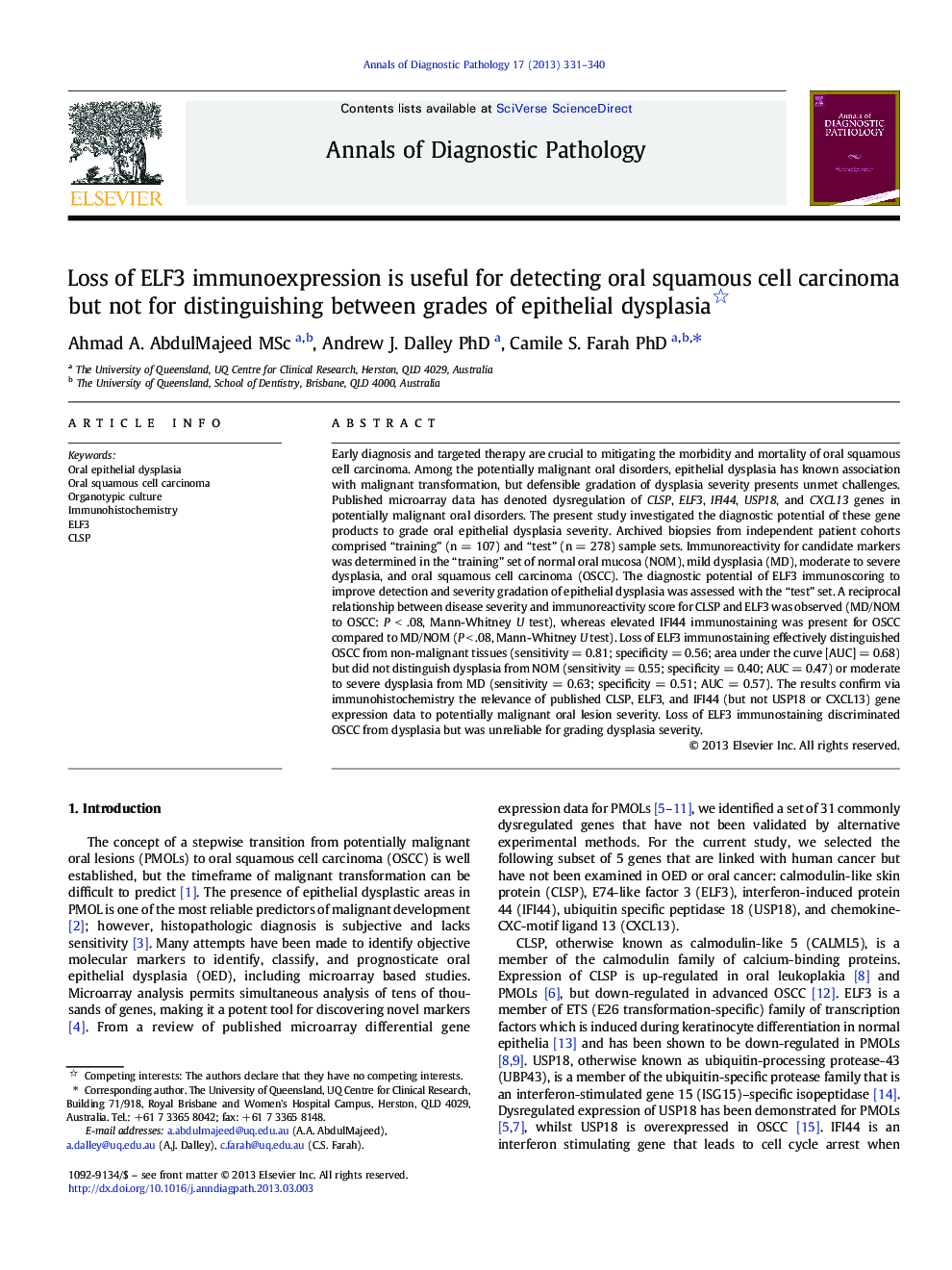| Article ID | Journal | Published Year | Pages | File Type |
|---|---|---|---|---|
| 4130200 | Annals of Diagnostic Pathology | 2013 | 10 Pages |
Early diagnosis and targeted therapy are crucial to mitigating the morbidity and mortality of oral squamous cell carcinoma. Among the potentially malignant oral disorders, epithelial dysplasia has known association with malignant transformation, but defensible gradation of dysplasia severity presents unmet challenges. Published microarray data has denoted dysregulation of CLSP, ELF3, IFI44, USP18, and CXCL13 genes in potentially malignant oral disorders. The present study investigated the diagnostic potential of these gene products to grade oral epithelial dysplasia severity. Archived biopsies from independent patient cohorts comprised “training” (n = 107) and “test” (n = 278) sample sets. Immunoreactivity for candidate markers was determined in the “training” set of normal oral mucosa (NOM), mild dysplasia (MD), moderate to severe dysplasia, and oral squamous cell carcinoma (OSCC). The diagnostic potential of ELF3 immunoscoring to improve detection and severity gradation of epithelial dysplasia was assessed with the “test” set. A reciprocal relationship between disease severity and immunoreactivity score for CLSP and ELF3 was observed (MD/NOM to OSCC: P < .08, Mann-Whitney U test), whereas elevated IFI44 immunostaining was present for OSCC compared to MD/NOM (P < .08, Mann-Whitney U test). Loss of ELF3 immunostaining effectively distinguished OSCC from non-malignant tissues (sensitivity = 0.81; specificity = 0.56; area under the curve [AUC] = 0.68) but did not distinguish dysplasia from NOM (sensitivity = 0.55; specificity = 0.40; AUC = 0.47) or moderate to severe dysplasia from MD (sensitivity = 0.63; specificity = 0.51; AUC = 0.57). The results confirm via immunohistochemistry the relevance of published CLSP, ELF3, and IFI44 (but not USP18 or CXCL13) gene expression data to potentially malignant oral lesion severity. Loss of ELF3 immunostaining discriminated OSCC from dysplasia but was unreliable for grading dysplasia severity.
